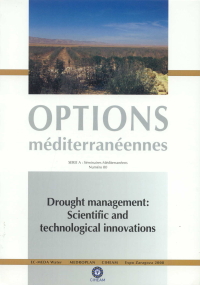| Article précédent | p. 141-148 | Article suivant |
Drought management planning: conditions for success
Drought is the most complex of all natural hazards. The lack of progress in drought preparedness planning and the development of national drought policies is a reflection of this complexity. With the demand for water increasing because of expanding population, urbanization, changes in land use, and many other factors, the time to move to a more risk-based drought management approach is now. Given projected increases in temperature and uncertainties regarding the amount, distribution, and intensity of precipitation, the frequency, severity, and duration of drought may increase in the future. Making the transition from crisis to drought risk management is difficult because governments and individuals typically address drought-related issues through a reactive approach and very little institutional capacity exists in most countries for altering this paradigm. Drought mitigation planning is directed at building the institutional capacity necessary to move away from this crisis management paradigm. This change is not expected to occur quickly - it is in fact a gradual process that requires changes in government policies and human behavior. Developing improved drought monitoring and early warning systems in support of drought preparedness planning and policy is an urgent need for all drought-prone counties.
- [ Afficher ]
- [ Télécharger ]
- [ Exporter la citation ]
Vous pouvez télécharger la citation au format :
- [ Imprimer ]
-
Mots-clés
BESOIN EN EAU, PLANIFICATION PREALABLE AUX CATASTROPHES, SECHERESSE, SYSTEME D'ALERTE RAPIDECiter cet article
Wilhite D.A., Knutson C.L. Drought management planning: conditions for success. In : López-Francos A. (ed.). Drought management: scientific and technological innovations. Zaragoza : CIHEAM, 2008. p. 141-148. (Options Méditerranéennes : Série A. Séminaires Méditerranéens; n. 80). 1. International Conference Drought Management: Scientific and Technological Innovations, 2008/06/12-14, Zaragoza (Spain). http://om.ciheam.org/om/pdf/a80/00800434.pdf



